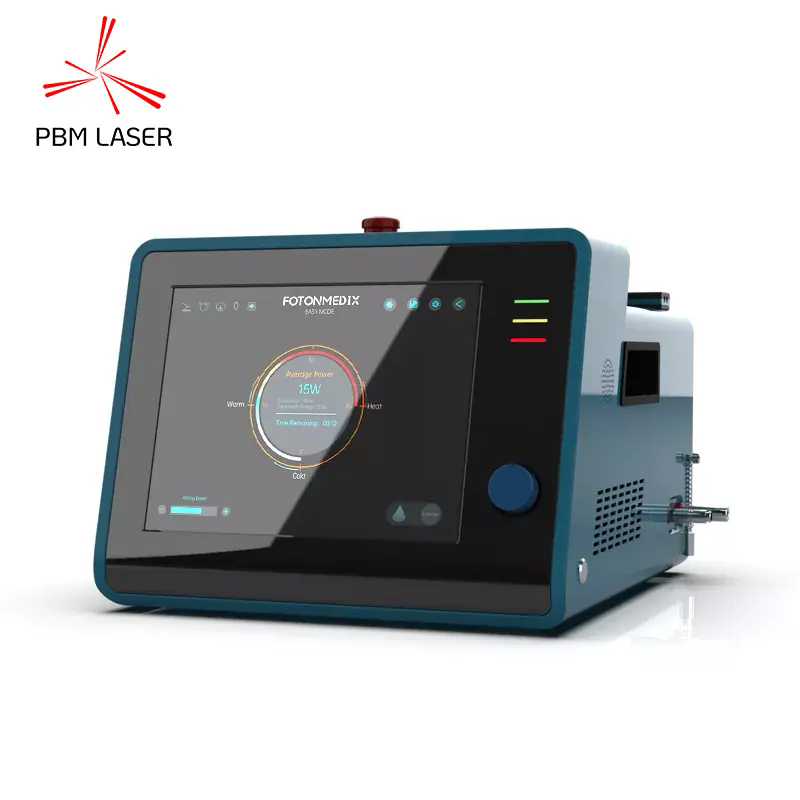What Makes Class IV Physiotherapy Lasers a Game-Changer in Pain Management and Rehabilitation?
2024-12-20
In the world of modern healthcare, advancements in technology are continually reshaping how we approach treatment, especially when it comes to pain management and rehabilitation. One of the most innovative tools gaining traction in physiotherapy clinics is the Class IV Physiotherapy Laser. But what exactly makes this cutting-edge device so effective? How does it help with pain relief, tissue healing, and rehabilitation?
In this blog, we’ll dive into the key benefits of Class IV Physiotherapy Lasers, how they work, and why they’re becoming a go-to treatment for various musculoskeletal conditions.
What is a Class IV Physiotherapy Laser?
A Class IV Physiotherapy Laser is a high-power laser used in physical therapy to treat a variety of conditions, from chronic pain and inflammation to musculoskeletal injuries and soft tissue damage. Unlike low-level lasers (Class I to III), which are typically used for superficial treatments, Class IV lasers deliver higher intensity light, penetrating deeper into tissues to stimulate healing on a cellular level.
These lasers emit light in the infrared spectrum (usually between 800 nm and 900 nm), which is absorbed by the tissues, promoting healing and reducing inflammation. The therapeutic effect is based on a process known as photobiomodulation, where light energy is absorbed by the body’s cells and converted into chemical energy that accelerates tissue repair and pain relief.
Why Are Class IV Physiotherapy Lasers So Effective?
Deep Tissue Penetration
One of the primary reasons Class IV lasers are so effective is their ability to penetrate deeper into tissues than low-level lasers. While low-level lasers can only affect the surface layers of the skin, Class IV lasers can reach muscles, tendons, ligaments, and even bones. This deeper penetration allows the laser to target the root cause of pain and inflammation, providing more significant therapeutic benefits for deeper injuries.
By delivering light energy deep into the tissue, the laser stimulates the body’s natural healing processes, increasing blood flow, promoting cell regeneration, and reducing inflammation.
Accelerated Healing and Tissue Repair
A major benefit of Class IV Physiotherapy Lasers is their ability to accelerate tissue repair and promote healing. The light energy from the laser stimulates mitochondrial activity in cells, enhancing ATP production (adenosine triphosphate), which is the energy currency of cells. This increased ATP production supports faster cellular repair and regeneration, particularly in damaged tissues.
For patients suffering from muscle strains, ligament sprains, joint injuries, or post-surgical rehabilitation, the Class IV laser significantly shortens recovery time by accelerating the body’s healing processes. This means less downtime and faster recovery for patients.
Pain Relief and Inflammation Reduction
Class IV lasers are highly effective in reducing pain and inflammation. The light emitted by the laser has a therapeutic effect on pain receptors in the body, helping to block pain signals and reduce discomfort. Moreover, the laser stimulates endorphin production, which naturally alleviates pain and promotes a sense of well-being.
In addition to pain relief, the laser also helps to reduce inflammation. Inflammation is a common cause of pain and discomfort in many musculoskeletal conditions, from arthritis to sports injuries. The laser reduces swelling and promotes the movement of fluids within tissues, thereby aiding the body’s natural anti-inflammatory processes.
Non-Invasive Treatment with No Side Effects
Unlike traditional pain management techniques, such as injections or surgeries, Class IV Physiotherapy Lasers offer a non-invasive, drug-free treatment option. There are no significant side effects associated with laser therapy, and it can be used as a complementary treatment alongside other forms of rehabilitation, such as physical therapy and exercise.
This makes it a great option for patients who wish to avoid the risks and complications associated with more invasive treatments. Laser therapy is typically well-tolerated, with minimal discomfort during sessions. Most patients report feeling a warm, soothing sensation during treatment, with little to no pain afterward.
Versatility in Treatment
Class IV lasers can be used to treat a wide range of musculoskeletal conditions, including:
- Acute and Chronic Pain: Whether the pain is caused by an injury, surgery, or an underlying condition like arthritis, Class IV lasers can help reduce discomfort and speed up healing.
- Soft Tissue Injuries: Strains, sprains, and ligament injuries can benefit greatly from laser therapy’s ability to accelerate healing and reduce inflammation.
- Joint Conditions: Arthritis, bursitis, and other joint issues can be effectively managed with the anti-inflammatory effects of laser therapy.
- Wound Healing: Class IV lasers are often used to promote faster healing of both acute and chronic wounds, including surgical incisions and ulcers.
- Sports Injuries: Athletes can use laser therapy to recover faster from muscle strains, tendonitis, and other sports-related injuries.
- Post-Surgical Rehabilitation: Laser therapy can aid in faster recovery after surgeries by reducing pain and swelling and improving tissue regeneration.
Minimal Recovery Time
One of the great advantages of Class IV laser therapy is that it typically requires minimal downtime. Most patients can resume their normal activities immediately after a session, making it an ideal choice for those with busy schedules or those recovering from sports injuries or surgeries. While some treatments may require multiple sessions, patients often report feeling relief after just a few treatments.
How Does a Class IV Physiotherapy Laser Treatment Work?
During a Class IV laser therapy session, the physiotherapist will apply the laser to the affected area of the body. The laser is moved in a sweeping motion over the skin, and the energy from the light penetrates the tissues. The entire process is non-invasive and typically lasts between 10-20 minutes, depending on the size of the area being treated.
Patients may feel a gentle warmth during treatment, but the process is generally painless. There is no need for anesthesia or recovery time, and patients can resume their daily activities immediately after the session.
How Many Sessions Are Needed?
The number of sessions required varies depending on the nature and severity of the condition being treated. For acute conditions, fewer sessions may be necessary, while chronic conditions may require more frequent treatments. Typically, patients start with 2-3 sessions per week, and the frequency may decrease as healing progresses. Your physiotherapist will assess your progress and adjust the treatment plan accordingly.
Conclusion: Is a Class IV Physiotherapy Laser the Right Treatment for You?
A Class IV Physiotherapy Laser is a highly effective, non-invasive treatment option for a wide range of pain and injury conditions. Its ability to promote faster healing, reduce pain, and accelerate tissue regeneration makes it a valuable tool for physiotherapists and patients alike.
Whether you're dealing with a chronic injury, acute pain, or recovering from surgery, Class IV laser therapy can provide significant relief and shorten recovery times. With its proven effectiveness, no side effects, and versatility, it’s no wonder why more and more people are turning to Class IV lasers for their rehabilitation needs.
If you’re considering this treatment, be sure to consult with a licensed physiotherapist or healthcare provider to see if Class IV laser therapy is right for your specific needs. With the right care, you can experience faster healing and improved quality of life!



